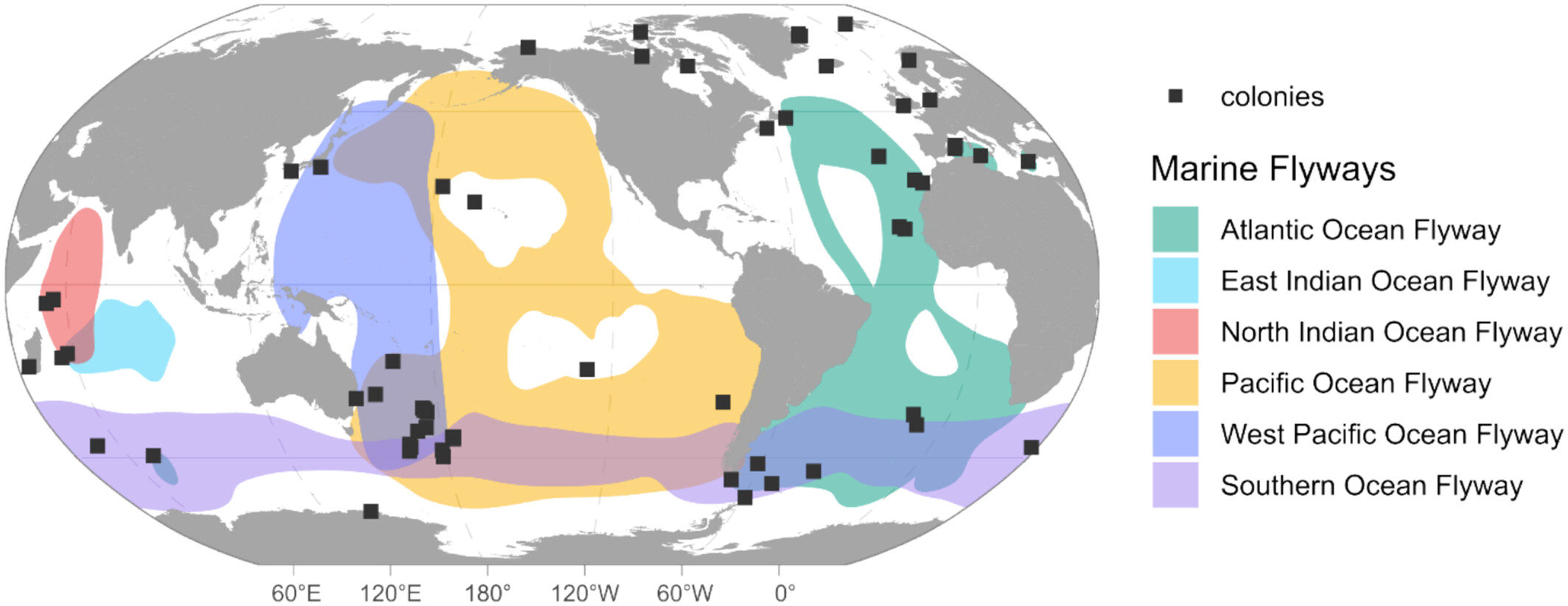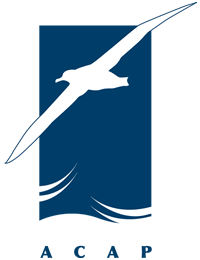
The six marine flyways identified across four ocean basins from analysis of tracking data for 48 pelagic seabird species breeding at the 64 colonies indicated by the black squares
Joanne Morten (BirdLife International, Cambridge, UK) and many colleagues have published open access in the journal Global Ecology and Biogeography on identifying marine flyways by tracking pelagic seabirds.
The paper’s abstract follows:
“Aim
To identify the broad-scale oceanic migration routes (‘marine flyways’) used by multiple pelagic, long-distance migratory seabirds based on a global compilation of tracking data.
Location
Global.
Time Period
1989–2023.
Major Taxa Studied
Seabirds (Families: Phaethontidae, Hydrobatidae, Diomedeidae, Procellariidae, Laridae and Stercorariidae).
Methods
We collated a comprehensive global tracking dataset that included the migratory routes of 48 pelagic and long-distance migrating seabird species across the Atlantic, Indian, Pacific and Southern Oceans. We grouped individuals that followed similar routes, independent of species or timings of migration, using a dynamic time warping clustering approach. We visualised the routes of each cluster using a line density analysis and used knowledge of seabird spatial ecology to combine the clusters to identify the broad-scale flyways followed by most pelagic migratory seabirds tracked to-date at an ocean-basin scale.
Results
Six marine flyways were identified across the world's oceans: the Atlantic Ocean Flyway, North Indian Ocean Flyway, East Indian Ocean Flyway, West Pacific Ocean Flyway, Pacific Ocean Flyway and Southern Ocean Flyway. Generally, the flyways were used bidirectionally, and individuals either followed sections of a flyway, a complete flyway, or their movements linked two or more flyways. Transhemispheric figure-of-eight routes in the Atlantic and Pacific oceans, and a circumnavigation flyway in the Southern Ocean correspond with major wind-driven ocean currents.
Main Conclusions
The marine flyways identified demonstrate that pelagic seabirds have similar and repeatable migration routes across ocean-basin scales. Our study highlights the need to account for connectivity in seabird conservation and provides a framework for international cooperation.”
Reference:
Morten, J.A, et al. 2025. Global marine flyways identified for long‐distance migrating seabirds from tracking data. Global Ecology and Biogeography 34(2). e70004.
John Cooper, Emeritus Information Officer, Agreement on the Conservation of Albatrosses and Petrels, 24 February 2025

 English
English  Français
Français  Español
Español